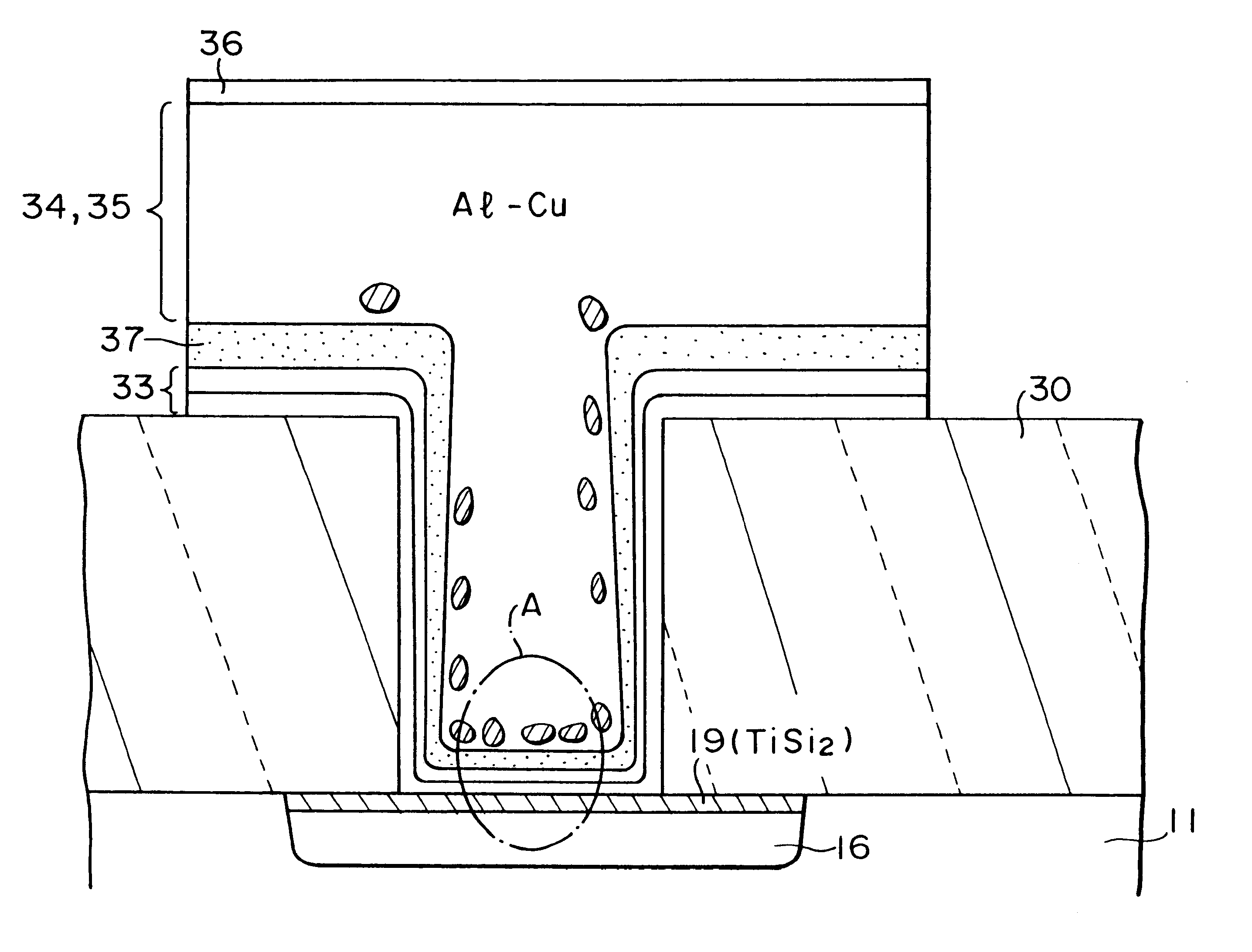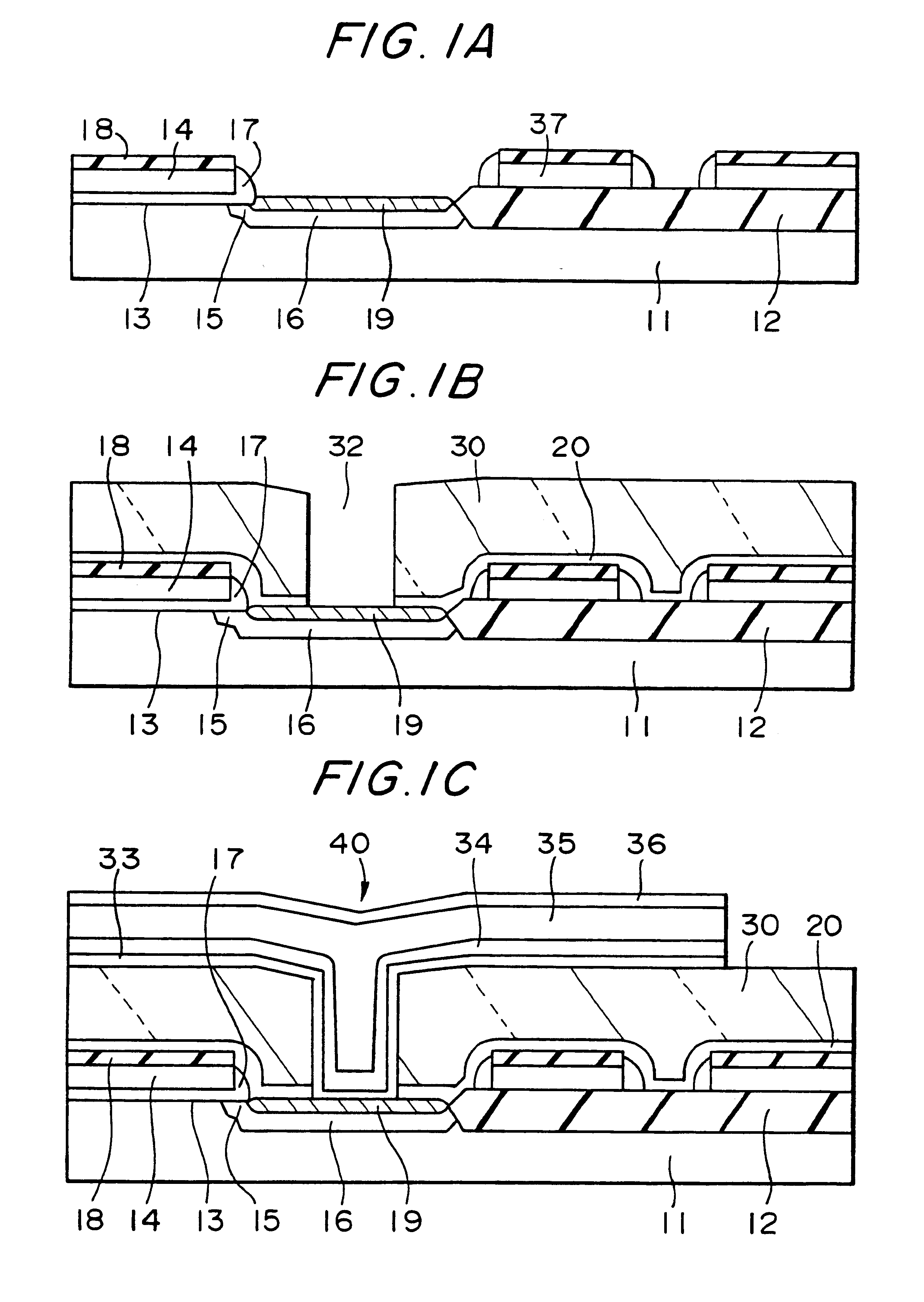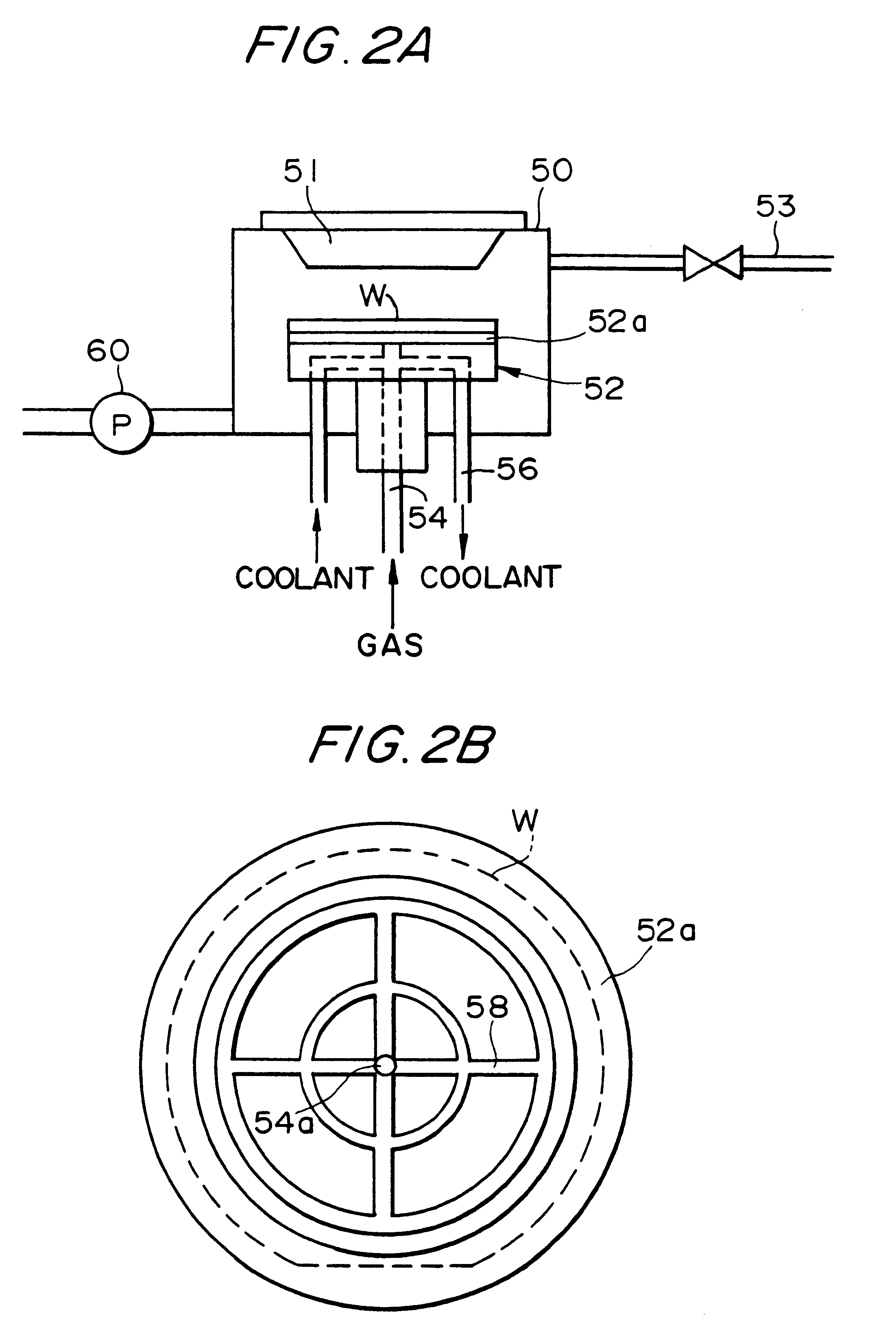Semiconductor device and method of fabricating the same
a technology of semiconductor devices and semiconductor materials, applied in semiconductor devices, semiconductor/solid-state device details, electrical apparatus, etc., can solve problems such as short circuits, difficult to embed wiring materials into through-holes, and high temperatur
- Summary
- Abstract
- Description
- Claims
- Application Information
AI Technical Summary
Benefits of technology
Problems solved by technology
Method used
Image
Examples
experimental example
(1) Electro-migration Resistance of a Metal Wiring Layer
The ratio (wt %) of beryllium to copper which were added to an aluminum alloy was altered to measure the defect ratio in an electro-migration test. The results are shown in FIG. 8. In FIG. 8, the stress time, namely the time during which current flows, is plotted along the horizontal axis, and the defect ratio is plotted along the vertical axis. Also, "a", "b", "c" and "d" in FIG. 8 show the results when the following metals were added to aluminum respectively.
"a": copper (0.5 wt %)
"b": copper (0.5 wt %), beryllium (0.1 wt %)
"c": copper (0.5 wt %), beryllium (0.3 wt %)
"d": copper (0.1 wt %), beryllium (0.3 wt %)
It is confirmed from FIG. 8 that, compared with the case of adding only copper to aluminum, a further addition of beryllium to aluminum containing copper reduces the defect ratio. It is also seen from the data shown by the symbols a and b in the graph that the defect ratio decreases as the amount of beryllium increases. ...
PUM
| Property | Measurement | Unit |
|---|---|---|
| temperature | aaaaa | aaaaa |
| temperature | aaaaa | aaaaa |
| temperature | aaaaa | aaaaa |
Abstract
Description
Claims
Application Information
 Login to View More
Login to View More - R&D
- Intellectual Property
- Life Sciences
- Materials
- Tech Scout
- Unparalleled Data Quality
- Higher Quality Content
- 60% Fewer Hallucinations
Browse by: Latest US Patents, China's latest patents, Technical Efficacy Thesaurus, Application Domain, Technology Topic, Popular Technical Reports.
© 2025 PatSnap. All rights reserved.Legal|Privacy policy|Modern Slavery Act Transparency Statement|Sitemap|About US| Contact US: help@patsnap.com



